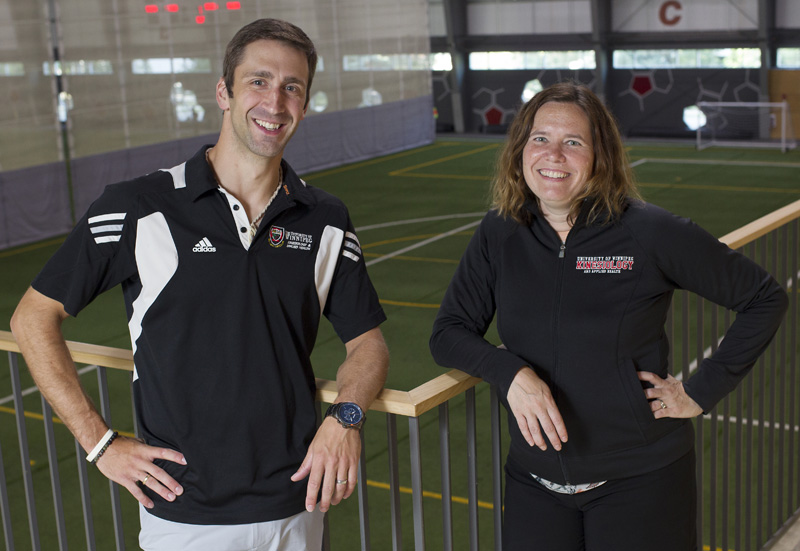Winnipeg researcher mobilizes Physical Literacy Environmental Assessment tool
 Nathan Hall believes in the Physical Literacy Environmental Assessment tool, also known as PLEA. The associate professor at the University of Winnipeg has been researching physical literacy for years, and was one of the first users of the Sport for Life innovation. Now he’s using PLEA to compile data on movement environments in his home city, alongside his co-investigator Dr. Melanie Gregg.
Nathan Hall believes in the Physical Literacy Environmental Assessment tool, also known as PLEA. The associate professor at the University of Winnipeg has been researching physical literacy for years, and was one of the first users of the Sport for Life innovation. Now he’s using PLEA to compile data on movement environments in his home city, alongside his co-investigator Dr. Melanie Gregg.
“Our initial choice to use the PLEA tool was two-fold. It was the only tool out there that could assess environments that had any sort of real backing, and then it was also fairly user friendly and not complicated,” Hall told Sport for Life.
“We knew going into our research that we would be looking at early childhood education providers who may be newcomers to Canada or who speak English as their second language, so we knew we needed a tool they could understand. We’ve found it’s fairly straightforward.”
Hall first encountered the PLEA tool while attending Sport for Life’s 2018 International Physical Literacy Conference in Toronto. It was being championed by a colleague named Hilary Caldwell, and he found his interest piqued though the tool hadn’t yet been finalized.
“I remember sitting in the audience and thinking ‘boy, that sounds good, I wish I thought of that.’ I was glad someone was doing that work and right away I knew this could be something we could use down the road for a variety of different types of research.”
Hall and Gregg ultimately received a grant in August 2018 from the Social Sciences and Humanities Research Council (SSHRC) to work with the City of Winnipeg doing research on physical literacy focused professional development programs in early childhood education centers. They had to theorize how to evaluate the programs, and figure out the outcomes they were hoping to observe. It was a complex and challenging process, one made easier by the PLEA tool.
“We were warned that it hadn’t been used in early childhood settings before and we weren’t sure how that was going to go, but even with the warning we still wanted to try to use it. We hoped that as am offshoot of our research we might help validate the PLEA for the early childhood world too.”
Hall and Gregg’s work dovetailed nicely with Sport for Life’s development of the tool, bringing him to the attention of Senior Manager of Education and Evaluation Alex Wilson. When she learned of the ways he was planning to mobilize the tool, she knew this was something she had to throw her weight behind.
“Our work relies on large-scale buy-in, and on people really embracing our tools and finding creative new ways to use them. With the research being done by Dr. Hall and others, we’ll expand our understanding of how the environment influences physical literacy experiences,” said Wilson.
“We’re all looking forward to hearing the results of his research.”
But it’s a little too early for that, as Hall and his team haven’t yet completed their post-data analysis. He knows already that many early childhood education environments have limited space, and limited access to the outdoors.
“The environment is so important because if it doesn’t promote physical literacy then it reduces opportunities. Many early childhood education providers are handcuffed because their environments don’t afford those opportunities, no matter how much they believe they should be included.”
The types of innovations he would like to see include adding footprints or hopscotch decals in hallways and promoting outdoor facilities and fields. He envisions an environment with physical literacy themed learning spaces. But first they need to see the results, so they can focus their efforts in the right direction.
“The development of these types of tools will help us better understand the role of environment on physical literacy and I believe we’ve only begun to scratch the surface.”

